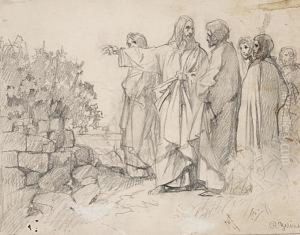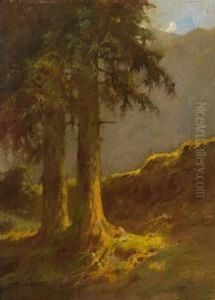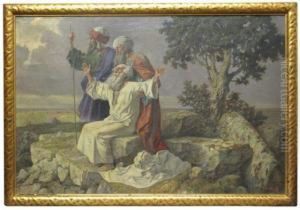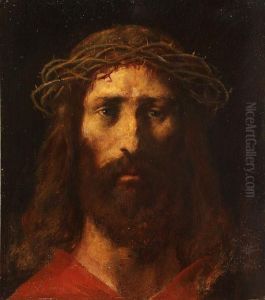Rudolf I Yelin Paintings
Rudolf Yelin, often referred to as Rudolf Yelin the Elder to distinguish him from his grandson Rudolf Yelin the Younger, was a significant German stained glass artist primarily active during the late 19th and early 20th centuries. Born in 1864 in Stuttgart, Germany, Yelin came of age in a period that saw a resurgence of interest in traditional crafts, including the art of stained glass, which had its heyday in the medieval period but had experienced a decline in the centuries that followed.
Yelin trained at the Stuttgart Art Academy and was particularly influenced by the Arts and Crafts movement and the related German Werkbund, which advocated for a revival of craftsmanship and an integration of art and design in response to the industrial revolution's mass production. He became a prominent figure in the field of stained glass, which was going through a renaissance in Germany at the time. His work was characterized by its meticulous craftsmanship and often incorporated religious and historical themes.
As an artist, Yelin was involved in the restoration of historical stained glass as well as the creation of new works. He contributed significantly to the interior designs of various churches, creating windows that were admired for their rich coloration and intricate design. His approach combined traditional techniques with a modern aesthetic, allowing him to produce works that resonated with the sensibilities of his time while also paying homage to the past.
Yelin's legacy extends beyond his own lifetime, as he was part of a lineage of artists. His grandson, Rudolf Yelin the Younger, also became a notable stained glass artist, continuing the family tradition. The elder Yelin's impact on the field of stained glass is recognized for its contribution to the revival of the medium in Germany and the broader European context.
Rudolf Yelin died in 1940, leaving behind a body of work that continues to be studied and appreciated for its artistry and craftsmanship. His windows adorn numerous ecclesiastical buildings and other structures, serving as lasting testaments to his skill and his commitment to the revival of the stained glass art form.



